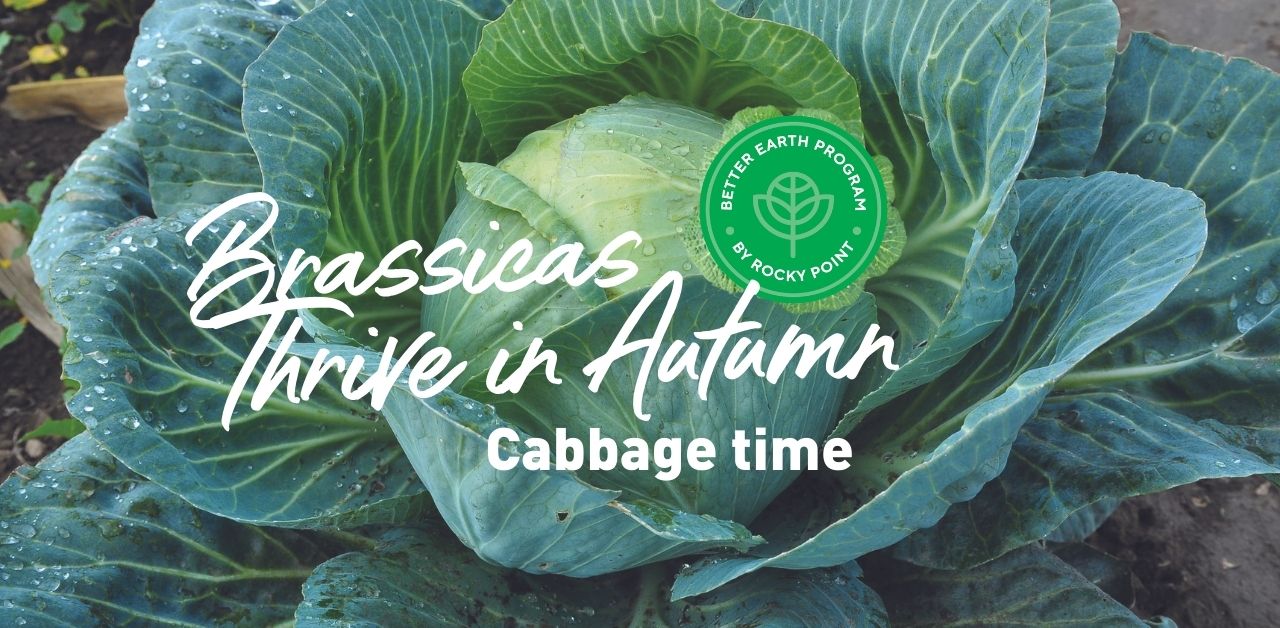Cabbages are a nutritious, easy to grow and delicious vegetable to plant in autumn and winter. They are rich in minerals, vitamins, anti-oxidents, all whilst being low in calories.
They are in good company in the Brassica genus, with family members such as, Kale, Broccoli, Broccolini, Cauliflower, Brussel Sprouts, & Kohl Rabi.
Most brassicas require cold nights and milder day temperatures to form their edible hearts and flowering heads.
How to Grow Cabbage / Brassicas:
To grow you need to give this family a full sun location, with free draining, compost rich soil that has a slightly sweet soil pH (7.5 alkaline). Check your soil pH with a pH test kit – these are readily available at garden centres and hardware stores. If your soil pH is acidic (under 7) you can add dolomite or garden lime to the soil in a powder or liquid form to raise the pH to alkaline. Try our Rocky Point Organic Potting Mix if you are using a raised garden bed.
How to Fertilise Cabbage Brassicas:
Brassicas are heavy feeders, so regular applications of organic fertilisers and side dressings of compost and manures is beneficial throughout their growing season. Rocky Point ActivGrow Fertiliser Pellets are a great certified organic* alternative to use, slowly releasing over a few weeks until the pellets dissolve adding additional carbon and nutrients into the soil profile. Reapplying every 4-6 weeks.
Use: All can be used in a variety of savory dishes. Stir fries, salads, steamed, baked, fresh, soups, casseroles, sautéed, pickled.
The other key factor is that the dreaded cabbage moth who loves to lay her eggs on all these brassicas is generally not active in autumn and winter.
Varieties: Drumhead, Lionheart, Savoy, Mini – great for those wanting to grow cabbages in smaller spaces and Iarge containers, Red and Chinese, often called Wong bok (NZ) or Wombok.
I love the red cabbage because it is actually a fabulous purple in colour and I often plant it in my ornamental garden amongst flowering annuals and perennials.
_MEB.png?width=842&height=596&name=RP_HorizontalColour(R)_MEB.png)



